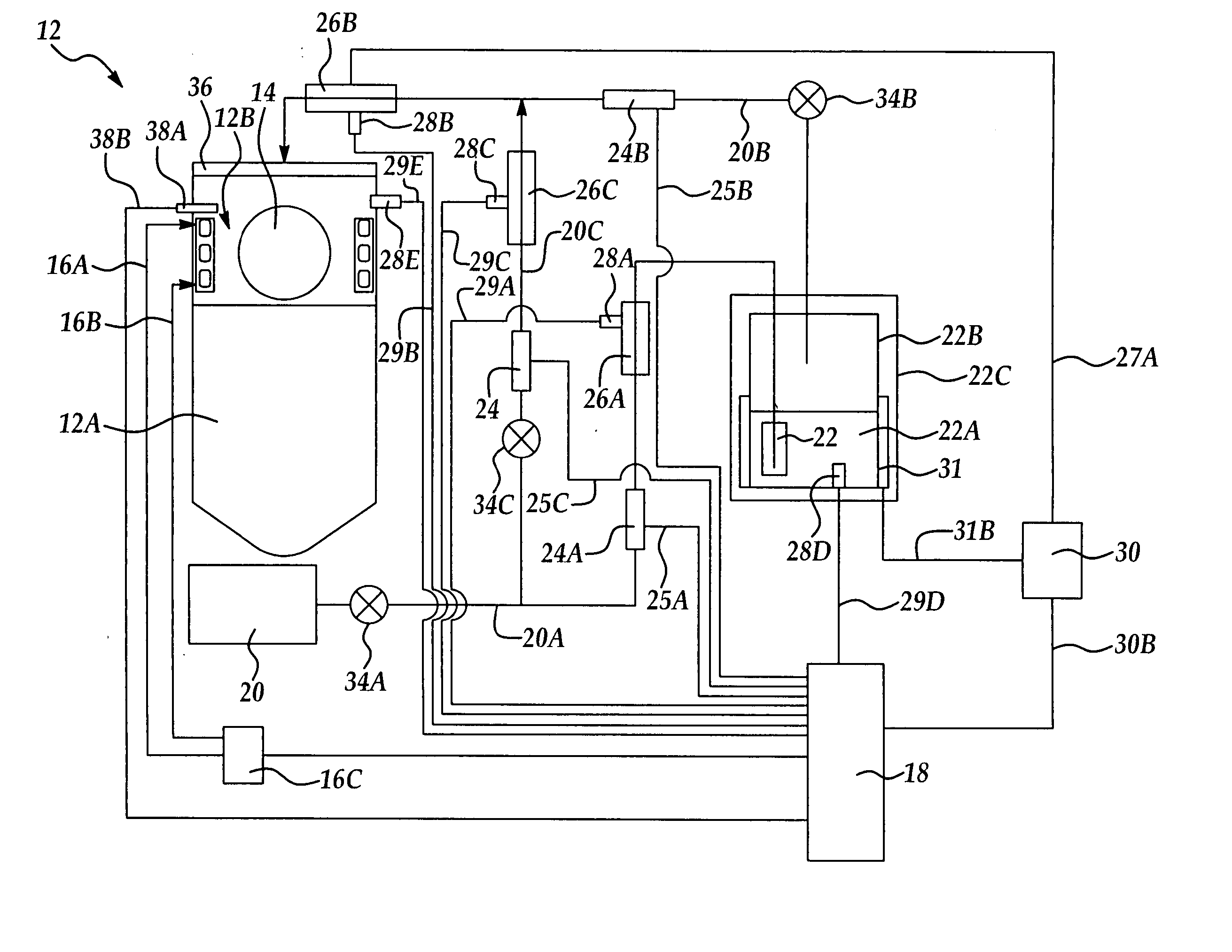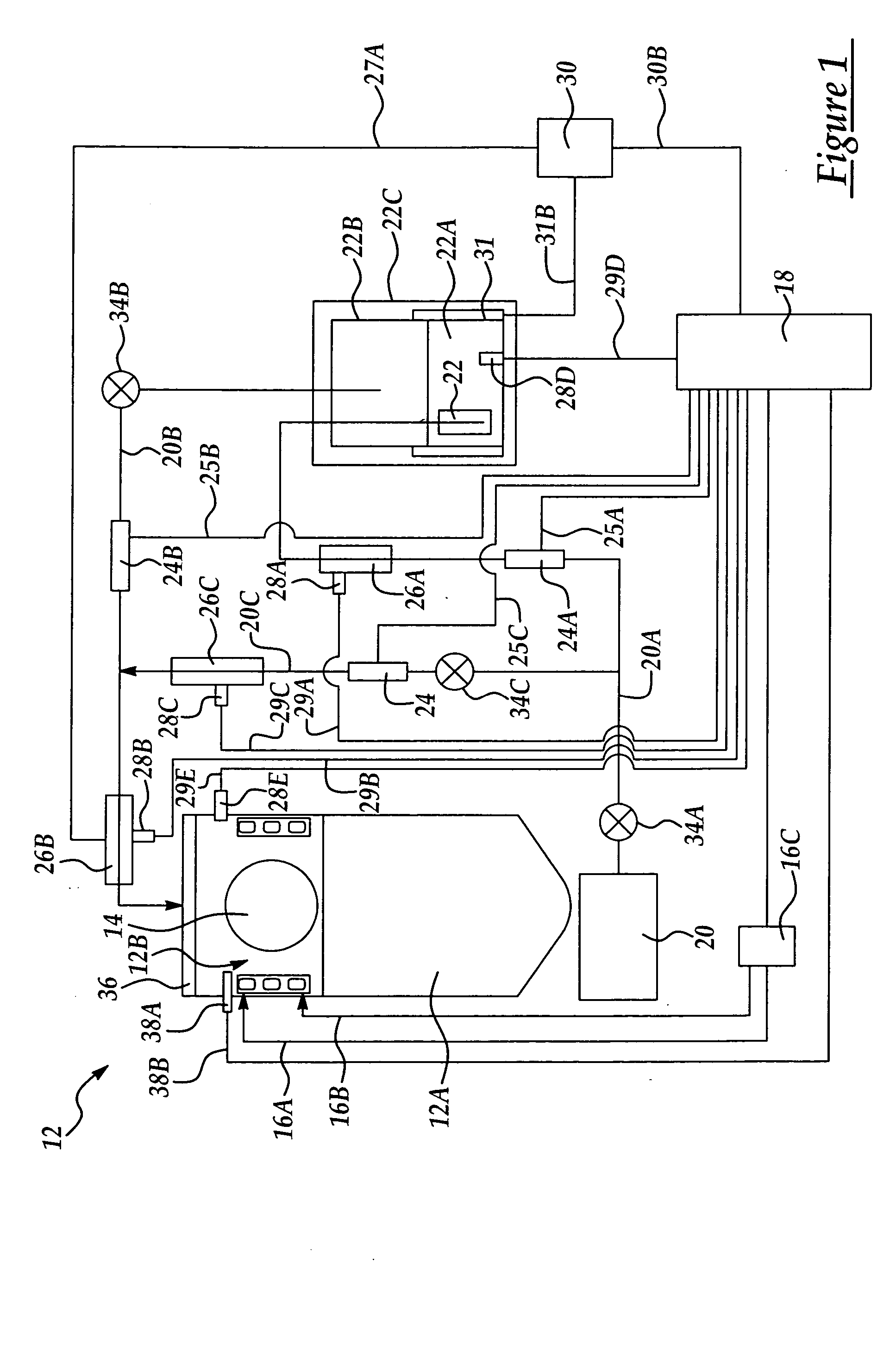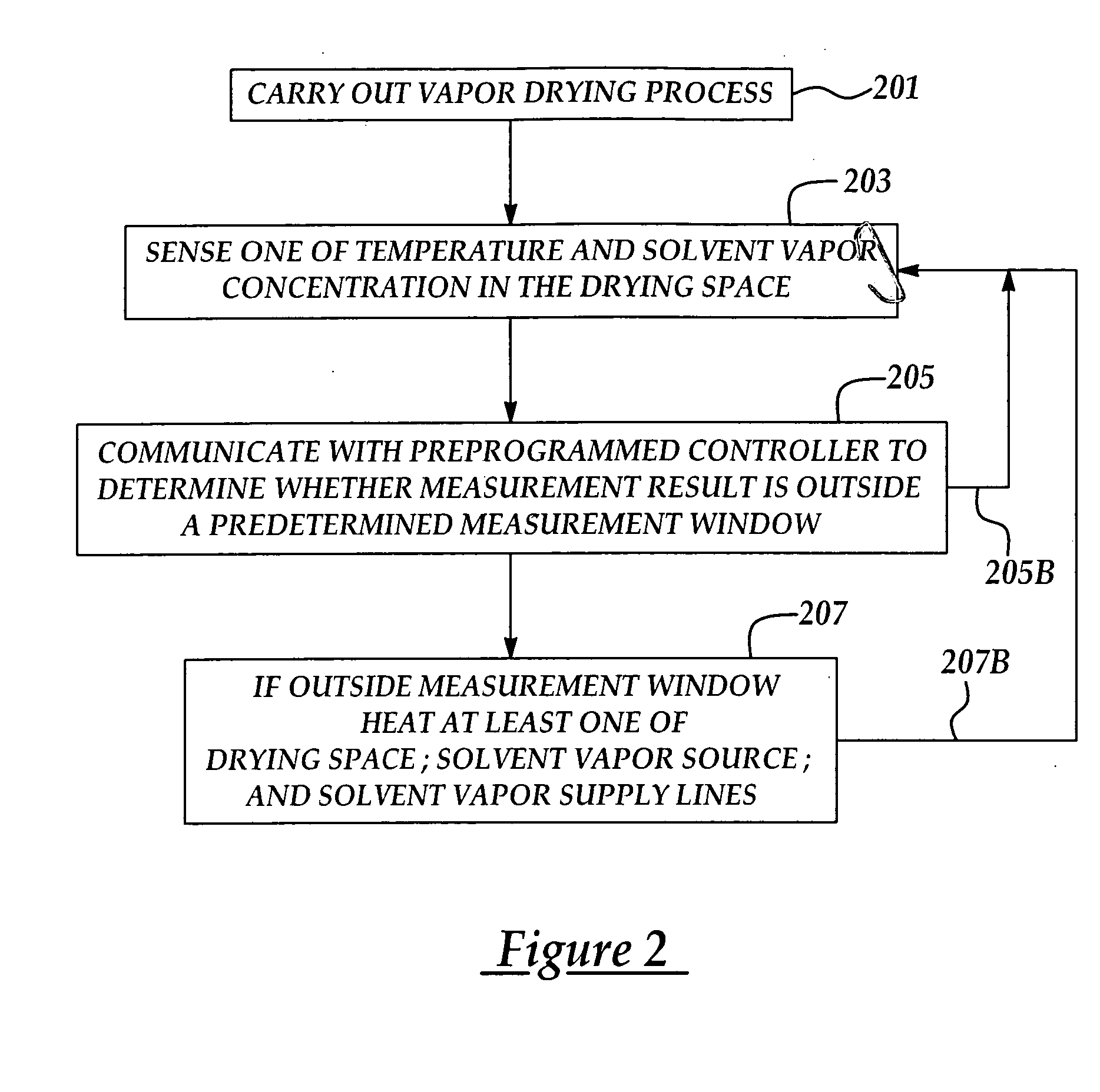Method to improve post wafer etch cleaning process
a technology of cleaning process and semiconductor process, applied in drying machines, lighting and heating apparatus, furnaces, etc., can solve the problems of device degradation, semiconductor process wafer rejection, and increase the detrimental effect of particulate contamination
- Summary
- Abstract
- Description
- Claims
- Application Information
AI Technical Summary
Benefits of technology
Problems solved by technology
Method used
Image
Examples
Embodiment Construction
[0016] The present invention is directed at a solvent vapor drying process and apparatus, preferably using alcohol, for example, isopropyl (IPA) as the solvent, for removing water from a semiconductor process wafer surface following a deionized water rinsing process. While the method and apparatus of the present invention is explained with reference to a Marangoni type drying process, it will be appreciated that the method of and apparatus of the present invention may be used in other vapor drying processes including a static wafer drying process where the wafer is held in a static position in a vapor drying chamber following a rinsing process.
[0017] In addition, the method and apparatus of the present invention are particularly suitable for removing water from a wafer process surface following formation of vias in a dielectric insulating layer, preferably with a via diameter less than about 0.25 microns and an aspect ratio (depth to diameter) of greater than about 5. The method an...
PUM
 Login to View More
Login to View More Abstract
Description
Claims
Application Information
 Login to View More
Login to View More - R&D
- Intellectual Property
- Life Sciences
- Materials
- Tech Scout
- Unparalleled Data Quality
- Higher Quality Content
- 60% Fewer Hallucinations
Browse by: Latest US Patents, China's latest patents, Technical Efficacy Thesaurus, Application Domain, Technology Topic, Popular Technical Reports.
© 2025 PatSnap. All rights reserved.Legal|Privacy policy|Modern Slavery Act Transparency Statement|Sitemap|About US| Contact US: help@patsnap.com



